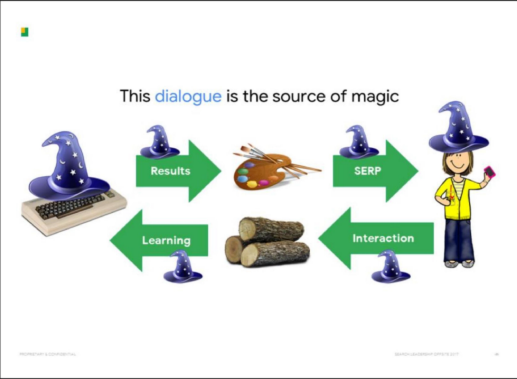‘Google’s CEO, Sundar Pichai, turned the tide of the trial this week as he shook the foundations of the DOJ’s case to the core.’ This is the headline Google would have liked to be reading at the end of Week 8; they had hoped that Pichai would recharacterise Google’s payments to Apple, its ceaseless pursuit of default status and revenue-driven business model. But this was not to be the case. Week 8 instead saw the DOJ flummox two of Google’s key witnesses — Pichai and Ben Gomes, a former head of ads — with revealing exhibits.
‘Self Interests’
The thrust of Google’s examination of Pichai on Monday was that the DOJ had misinterpreted Google’s business strategy. That the company makes payments to secure default status was not in dispute; Pichai coloured these transactions as a means of facilitating user access to what they want. In this line of arguing, users know they like using Google and so it is Pichai’s mission, as head of Google, to deploy the company’s resources and accommodate their wishes. This argument unravels after the slightest contact with reality: an email Pichai himself sent in 2007 expresses concerns about ‘the optics’ of Google being the default browser in Safari.[1] Pichai’s worry is consistent with another internal email exchange from the early 2000s, in which Google employees criticise Microsoft for putting its own search engine as a default on its devices. In their words, ‘Microsoft’s approach puts its own interests above those of end users’.[2] Google offers the remedy that users should be able to ‘select the default search provider’ as this choice ‘eliminates any company’s own self interests [sic]’.[3] In its infancy, Google clearly recognised the anticompetitive ramifications of defaults.
But, as Google has matured, its $19 billion per year payments to Apple tell us, the company has forgotten this lesson. The DOJ produced exhibits documenting the earliest negotiations between Google and Apple for revenue share. Defaults were a focus of the early exchanges between these two organisations; Pichai acknowledges that ‘the “most prominent search box should be set as default to Google”’ is a sticking point for Google’s side of the talks in 2007.[4] It is difficult to overlook the hypocrisy of Google’s position — criticising Microsoft for acting according to ‘self interest’ while intrepidly negotiating for default status on Apple devices in the same breath. Ultimately, Pichai could not shake the inherent duplicity involved in Google’s development of their current business model and his appearance damaged Google’s defence.
‘Engagement Hacking’
Gomes’s testimony later in the week had a similar result. Gomes too attempted to hold a morally inconsistent position — namely that the ‘free and open’ culture of early Google sustains the company to this day. The DOJ sharply rebutted Gomes’s testimony to that effect when they exhibited emails from Gomes himself in 2019, in which he complained that the Search team was ‘getting too close to the money’.[5] Gomes attributes this mission creep to an ‘angst around the metrics’.[6] These exhibits locate a recurring strand of the DOJ’s argument that found expression in Week 7 — that Google began to prioritise revenue-targets, such as their fabled 20% annual revenue growth rate, above user-experience.[7] This is a ‘trade-off’ that Gomes himself diagnoses: Google’s revenue-driven mindset tends to ‘user negativity caused by engagement hacking’.[8] This phrase, ‘engagement hacking’, combines the notions that Google’s business model is manipulating users and harming them. Because of the DOJ’s exhibits, Gomes’s testimony parades the very ghosts in the Google machine that it sought to exorcise.

Arguments concerning the competitive advantages of scale, which have been a spectral presence throughout the trial, once again haunted Google. The DOJ produced a Google slide deck from 2015 that makes the prosecution’s point explicit: ‘because at our scale’, the presentation touts, ‘even the most obscure choice would have been exercised by thousands of people.’[9] The slides describe this process of ‘refined priors’ as ‘one of the strongest signals for much of Google’s search and ads ranking’ — directly confessing the competitive advantages that scale and past user-interactions offer to Google’s product. This point constructs in miniature the wider theme of Week 8: each of Google’s attempts to combat the DOJ’s arguments cannot but emphasise the company’s anticompetitive practices and the harms these have produced.
[1] https://www.justice.gov/d9/2023-10/417055.pdf
[2] https://www.justice.gov/d9/2023-10/417451_0.pdf, p. 2.
[3] https://www.justice.gov/d9/2023-10/417451_0.pdf, p. 2.
[4] Trial Exhibit-UPXD0672: U.S. and Plaintiff States v. Google LLC (justice.gov)
[5] Trial Exhibit-UPX2044: U.S.v. Plaintiff States v. Google LLC. (justice.gov), p. 1.
[6] Trial Exhibit-PSX00204: U.S.v. Plaintiff States v. Google LLC. (justice.gov), p. 1.
[7] See Trial Exhibit-PSX00204: U.S.v. Plaintiff States v. Google LLC. (justice.gov).
[8] Trial Exhibit-PSX00204: U.S.v. Plaintiff States v. Google LLC. (justice.gov), p. 1.
[9] Trial Exhibit – UPX0205: U.S. and Plaintiff States v. Google LLC (justice.gov), p. 4.
Header image courtesy of Mitchell Luo on Unsplash (licensed for free via Unsplash Licence).
Body image taken from DOJ website.